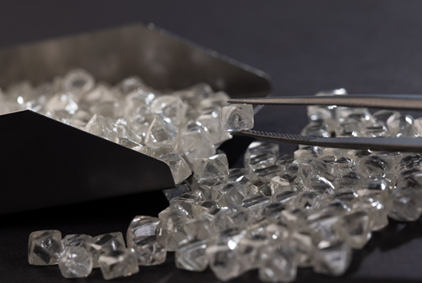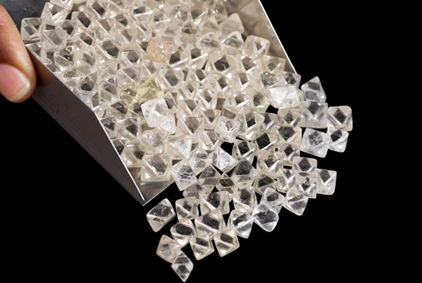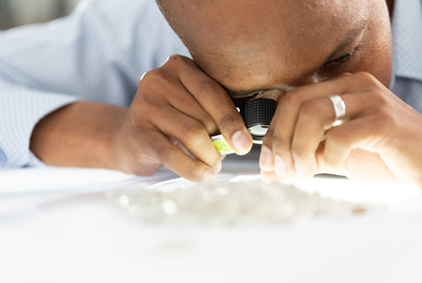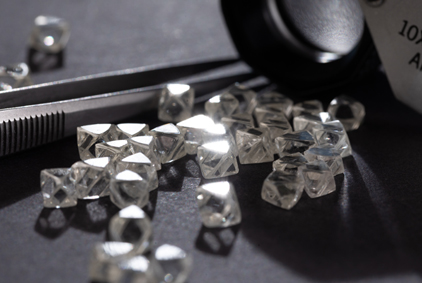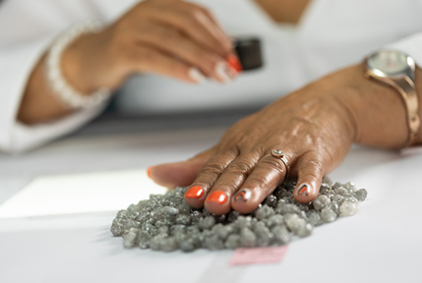The key activity of DTC Botswana is sorting and valuation of rough diamonds. When diamonds arrive from the mines, they are sorted into different categories according to their carat, cut, clarity, and colour (4Cs).
When diamonds arrive from the mines, they are sorted into different categories according to their carat, cut, clarity, and colour (4Cs).
Cut (Model)
Rough diamonds fall into two main model categories, “Sawable” and “Makeable”. Sawable stones are often octahedral or dodecahedral in shape. The rough diamond is sawn prior to being polished.
This will produce two polished stones. Makeable diamonds tend to be broken octahedrons or dodecahedrons or flatter whole models. They usually produce one polished stone.
Colour
The most common colours of diamonds fall into categories from colourless to yellow and brown, although some rarer colours such as blue, orange, pink and red do appear from time to time. These very rare examples are referred to in the industry as fancy coloured diamonds, but these stones are rare in Botswana. Diamonds described as ‘white’ are actually colourless and fully transparent. Fancy coloured diamonds are generally worth much more than white diamonds due to their rarity and beauty.
DTCB sorts diamonds into around 11,344 categories. The sorting process ensures the correct valuation of all mines’ productions. It also ensures that a consistent assortment of diamonds can be delivered to the DTCB clients, being Okavango Diamond Company and De Beers Global Sightholder Sales. Consistency is ensured by the use of samples that guide decision making on shape, quality and colour.
Carat (Weight)
Carat refers to the weight of a diamond and this is equivalent to 0.2 grams. Rough diamonds come in various weights as categorised below:
- Special Stones:10.8 carats and above
- Large Stones:1.8 carats – 10.79 carats
- Grainers: 0.66 carats – 1.79 carats
- Smalls:0.65 carats & below
Clarity (Quality)
The clarity of a diamond is a measure of the number, size, position and type of impurities, inclusions or cracks found within the stone. This significantly affects the final value of the diamond and may impact on the way it is split up into smaller stones prior to polishing.
Inclusions also impact the way in which light travels through the stone, which could reduce the “fire” and brilliance of the polished diamond. An inclusion free, clean stone holds greater value because of its rarity.

